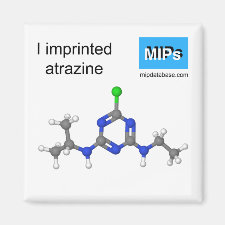
Authors: Gkementzoglou C, Kotrotsiou O, Kiparissides C
Article Title: Synthesis of Novel Composite Membranes Based on Molecularly Imprinted Polymers for Removal of Triazine Herbicides from Water.
Publication date: 2013
Journal: Industrial & Engineering Chemistry Research
Volume: 52
Issue: (39)
Page numbers: 14001-14010.
DOI: 10.1021/ie400479c
Abstract: Novel molecularly imprinted polymer (MIP) composite membranes for the selective removal of triazine herbicides from polluted water sources were synthesized using two different approaches. According to the first method, sandwich-type composite membranes were prepared that consisted of a middle packed layer of MIP nanoparticles (NPs) confined between two microfiltration membranes. The highly selective MIP NPs were synthesized in the presence of atrazine, acting as template molecule, via the mini-emulsion polymerization method. In the second approach, MIP thin films, formed via an in situ polymerization method in the presence of the template molecule (desmetryn), were deposited on the top surface of ceramic support membranes using 2,2'-azobis (N,N'-dimethylene) isobutyramidine as initiator. The rebinding capacity of the synthesized MIP-ceramic composite membranes toward the template molecules was initially tested in batch-wise guest binding experiments. Subsequently, the synthesized composite membranes were tested in continuous dead-end filtration experiments to assess their binding efficiency, specificity, and their ability to adsorb the template molecules from water samples, at very low concentrations (i.e., down to 1 ppb). A series of experiments were also carried out to assess the binding capacity of the regenerated composite membranes and their long-term performance. The present results clearly demonstrate that the synthesized MIP composite membranes can remove the triazine herbicides of atrazine and desmetryn from water samples at very low concentrations (i.e., down to 1 ppb). Finally, it was found that the MIP composite membranes could be regenerated and reused without loss of their binding capacity and 'memory effect', which underlines their outstanding stability and reusability features in a continuous filtration process
Template and target information: atrazine, desmetryn



Join the Society for Molecular Imprinting

New items RSS feed
Sign-up for e-mail updates:
Choose between receiving an occasional newsletter or more frequent e-mail alerts.
Click here to go to the sign-up page.
Is your name elemental or peptidic? Enter your name and find out by clicking either of the buttons below!
Other products you may like:
 MIPdatabase
MIPdatabase









